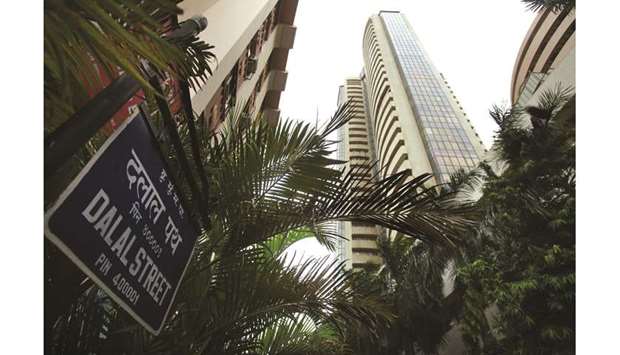Indian assets kicked off the month on the front foot, bucking the weakness in Asian equities as a slowing economy, US trade tariffs and a slump in oil prices spurred speculation that the central bank would cut rates later this week.
The benchmark Sensex closed 553.42 points, or 1.39%, higher at 40,267.62 points, while the NSE Nifty 50 index finished at 12,088.55, up 165.75 points, or 1.39%. Year to date, the Sensex and Nifty indices have risen nearly 12% each.
The rupee rallied to a one-month high and benchmark bond yields slid to an 18-month low after data late Friday showed gross domestic product rose last quarter at a slower pace than economists expected.
Indian assets are extending gains after the Sensex capped its third monthly increase in May and benchmark yield posted its biggest monthly loss since November 2016.
The rally has come amid a slide in global yields sparked by an escalating US-China trade war and a sweeping election victory for Prime Minister Narendra Modi, which last week led to $1.5bn of foreign inflows into local shares and debt.
While the US said on Friday it would impose tariffs on previously duty-free Indian products, a slump in the price of oil lowers the import bill of the fastest-growing energy consumer and improves the outlook for inflation, which is already below the central bank’s target.
“A crash in crude oil prices, a stronger rupee are all favorable tailwinds driving the market higher,” said Gaurang Shah, chief investment strategist at Geojit Financial Services in Mumbai. “My wild expectation will be a 50-basis point rate cut” at the RBI’s policy review on Thursday, he said.
Still, trade tensions and domestic economic challenges will limit further upside for equities, said Jitendra Panda, managing director at Peerless Securities in Kolkata. Liquidity has dried up in recent months as demand for cash picked up ahead of six-week general election, putting a lid on investment and consumption.“Slowing economic growth and lower auto sales remain in focus and investors await the government’s plan to deal with these challenges,” he said.
All 19 sector sub-indexes advanced led by automakers. The S&P BSE Auto Index jumped 1.9%, paring its year-to-date loss to 10%.
Reliance Industries contributed the most to the index advance, increasing 2.3%. Hero MotoCorp had the largest gain, rising 6%. ICICI Bank was the biggest drag on the index and had the biggest drop, declining 0.2%.
Meanwhile, the rupee ended at a one-month high at 69.27 a dollar, up 0.63% from its previous close.
So far this year, the rupee has risen 1% against the greenback. During the period, foreign investors bought $11.05bn in Indian equities and sold $39.4mn in the debt market.
Falling global yields also added to the positive sentiment. The dollar fell against major peers as declining Treasury yields and bets for a US interest-rate cut weighed. Traders are watching for the next salvo in the trade war after Washington took aim at Mexico and India, and Beijing imposed retaliatory tariffs on US goods.
The yield on the 10-year government bond yield closed below 7% for the first time since November 2017, as falling crude oil and slowing economic growth boosted speculation of monetary easing by the Reserve Bank of India (RBI) in its next bi-monthly policy.
The yield on India’s 10-year benchmark bonds fell 5 basis points at closing to 6.982%, the lowest level since November 22, 2017. Yields had fallen by 42 basis points (bps) in May, the most since November 2016, helped by foreign inflows after Prime Minister Narendra Modi’s election win.

The Bombay Stock Exchange building in Mumbai. The benchmark Sensex closed up 553.42 points to 40,267.62 yesterday.
